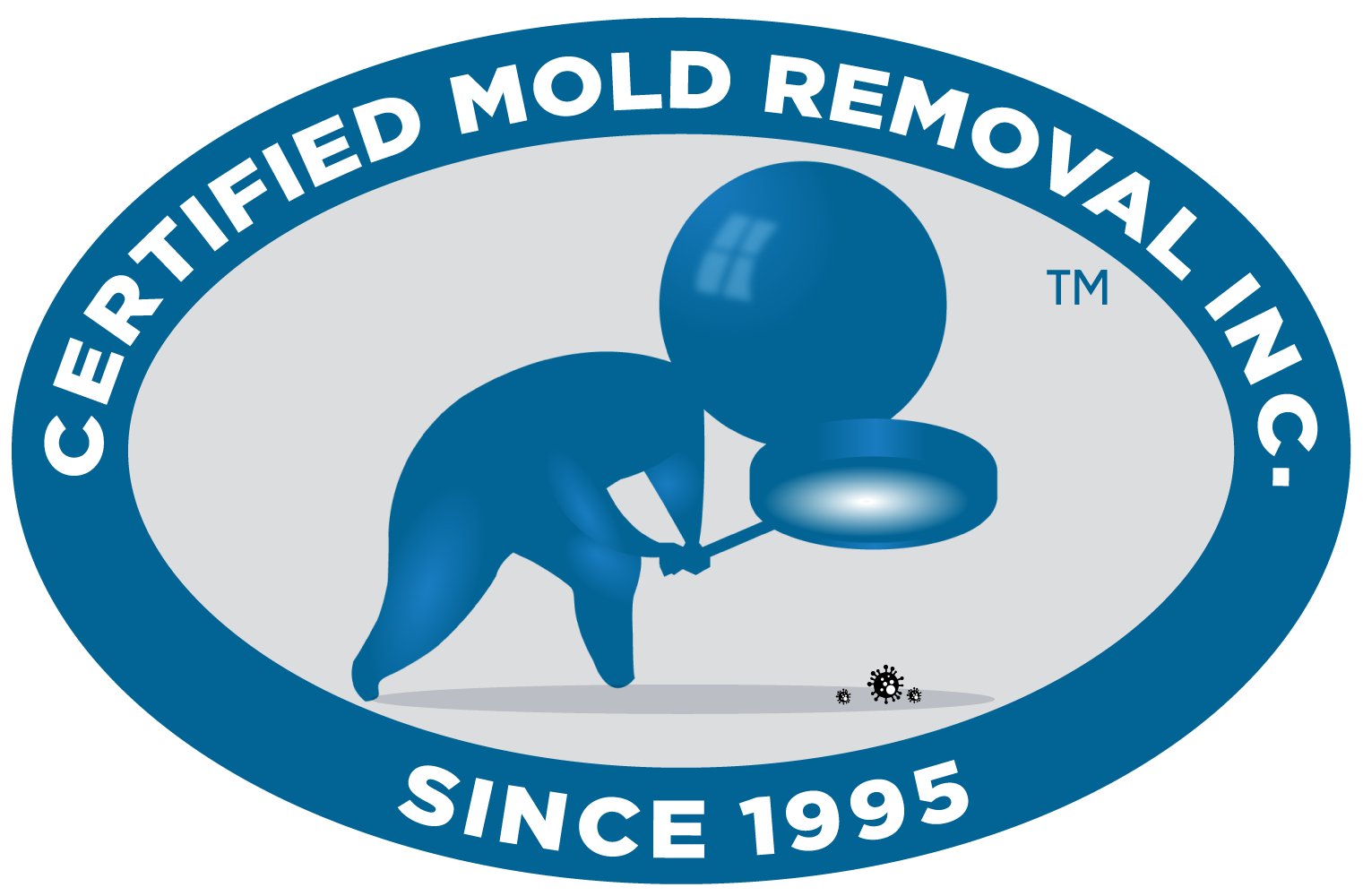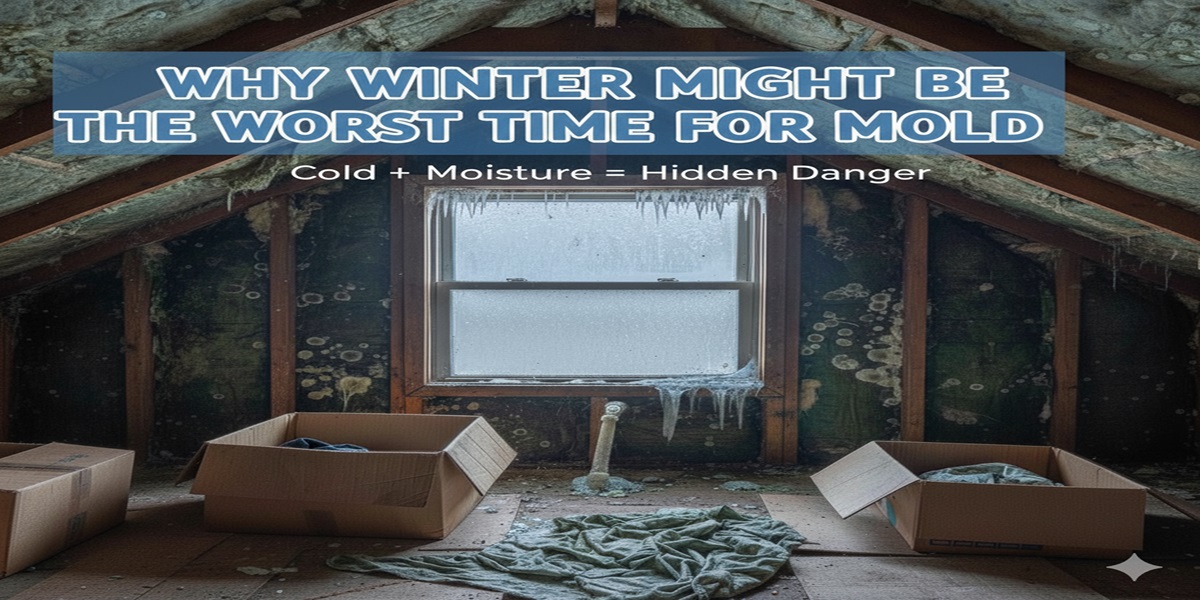Ask anyone when mold season is, and they’ll probably say summer. Humid weather, rainy days, that sticky feeling in the air—makes sense, right? Wrong. Winter is actually when many homes develop serious mold problems. The latest seasonal changes create conditions that favor mold growth, often in areas that homeowners overlook. That’s why mold inspection services are in high demand in winter.
Everything Gets Sealed Up Tight
Nobody opens windows in January. Homes get closed up to keep heat in and cold out, which means your house basically becomes an airtight box. Every shower, every pot of pasta boiling, every load of laundry—all that steam and moisture hang around inside. There’s no cross breeze, no fresh air exchange, nothing to dry things out.
Condensation becomes a significant issue. Windows fog up constantly. That’s the obvious sign. However, that is what happens inside walls where warm indoor air meets cold exterior surfaces. Water droplets form. Surfaces stay damp. In enclosed spaces with no airflow, mold can grow within 24 to 48 hours.
Basements and Attics Are a Nightmare
Basements stay cold while the rest of the house is heated. Physics takes over—warm air meets cold surfaces and boom, condensation happens. Drywall in finished basements that looked totally normal from the living space often has the back completely covered in mold growth once it’s pulled away from the wall. The smell hits you first.
Attics can be worse because people forget they exist. Heat rises, and if you have poor attic ventilation or insulation with gaps, warm, moist air condenses on the cold roof decking throughout winter. One inspection in Monmouth County found black mold covering probably 60% of the attic space. The family had been living there for three years and never went up there.
When professionals recommend winter mold testing, this is what they’re looking for—the hidden mold that has been quietly growing while the rest of the house appears fine. You’re downstairs watching TV, unaware of what’s developing overhead.
Your Heating System Spreads It Around
Furnaces and heating systems work overtime in winter. If there’s any mold growing near the HVAC system or in ductwork, it gets blown throughout the entire house every time the heat kicks on. You’re circulating spores to every room.
That musty smell when the furnace first turns on in the fall? It could be dust burning off or mold that accumulated over the off-season now being distributed through the vents. Once it’s in the ductwork, every heating cycle spreads it further. That’s why winter mold testing matters.
Mold inspection in winter often focuses heavily on HVAC systems for this exact reason. A minor issue near the furnace becomes a whole-house problem once the system starts running daily. Air filters help, but they can’t catch everything, especially if mold is actively growing somewhere in the system.
Health Issues Don’t Take a Winter Break
People spend way more time indoors during winter. If there’s mold somewhere in the house, exposure is constant. Respiratory issues, persistent coughing, allergy symptoms that seem worse at home—these can all be signs of mold exposure.
Children, elderly family members, and anyone with asthma or a compromised immune system are vulnerable. But even healthy adults will notice symptoms if mold spore counts are high enough. Headaches, congestion, that feeling of never quite catching your breath—these aren’t merely “winter colds” if they persist for weeks.
The problem is that winter masks mold issues. Everyone assumes they’re sick because of cold and flu season. They don’t ask that their own home might be contributing to their feelings of discomfort. If you or your household members often experience the flu or allergic reactions, request a mold inspection in winter.
What Actually Prevents Winter Mold
Ventilation matters more than anything else. Even in cold weather, opening windows for short periods allows moisture to escape and fresh air to circulate. It doesn’t have to be all day—even 10-15 minutes while making morning coffee helps.
Keeping humidity between 30-50% prevents most mold growth. Basements in particular need dehumidifiers running consistently through fall and winter because they naturally accumulate moisture.
Gutters and downspouts need attention before winter really hits. Clogged gutters overflow, dump water next to the foundation, and that water finds ways into basements. Downspouts should direct water at least five or six feet away from the house.
Any leaks need immediate repair. A dripping pipe under the sink might seem minor, but in winter conditions with reduced ventilation, it can lead to mold within days. Roof leaks, foundation cracks, plumbing issues—these need fixing as soon as they’re discovered.
When Professional Help Becomes Necessary
Visible mold covering more than a small area needs professional mold remediation services. Attempting to clean large mold colonies without proper equipment spreads spores throughout the home and makes the problem worse.
Water damage from any source requires professional assessment. Even if water gets cleaned up quickly, moisture can remain trapped in building materials. Professionals use specialized equipment to detect hidden dampness that will lead to mold if not addressed.
Winter doesn’t have to mean mold problems. With proper prevention and quick action when issues arise, homes stay healthy throughout the season. But when problems develop, professional mold remediation services from licensed and insured experts make all the difference. If you encounter any hurdles, have your property inspected. Address issues promptly before they turn into expensive remediation projects. Call Certified Mold Removal Inc. for same-day testing and mold inspection services.






